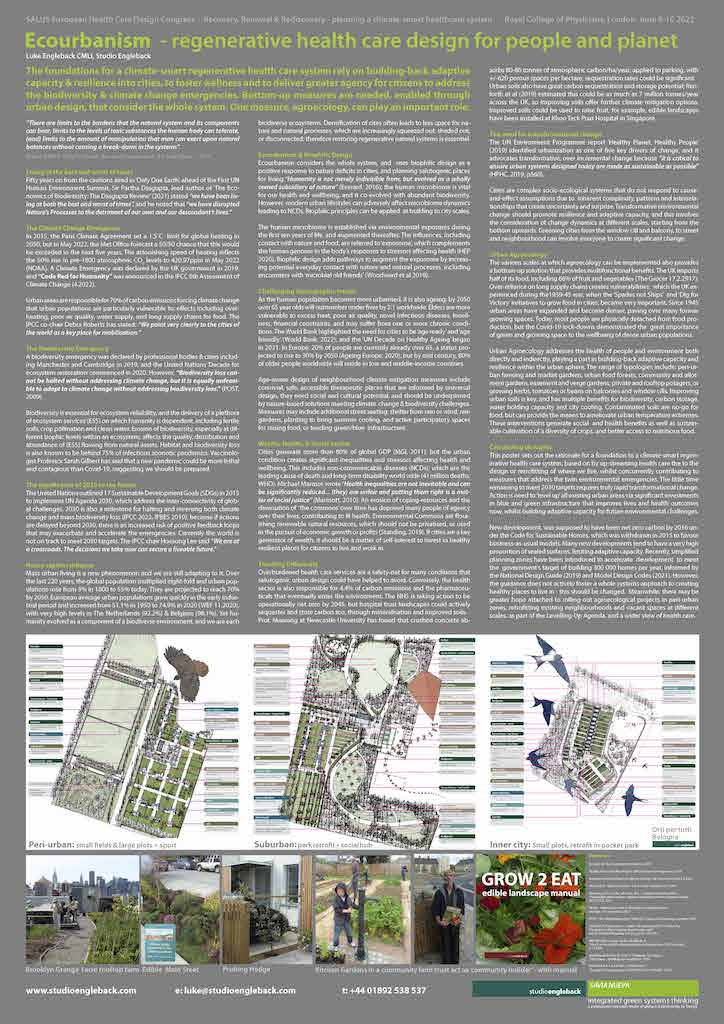Healthcare / Planetary health
European Healthcare Design 2022
Ecourbanism – regenerative healthcare design for people and planet
By SALUS User Experience Team | 04 Oct 2022 | 0
A systems view of healthcare and health promotion should extend beyond healthcare facilities to embrace cities, city regions, and the wider environment.
Abstract
The Covid-19 pandemic continues to evolve increasing stress on healthcare services and delaying routine appointments, many relating to non-communicable diseases (NCDs) – still the largest cause of mortality and long-term ill health globally.
Leading scientists have expressed the view that a new pandemic could be more lethal and contagious than Covid-19, suggesting we should be prepared. This should go beyond vaccine capacity to include improvement of general health by reducing NCDs through improving urban environments and inequality.
About 90 per cent of all Covid-19 infections occur in cities, and NCDs exacerbate the condition. Concurrently, the world faces the real threat of global environmental breakdown. Back-to-back United Nations conferences on interlinked issues of food systems, biodiversity and climate change in the autumn of 2021 concluded that business-as-usual has to change fundamentally, and rapidly. All impact human health and wellbeing.
The year 2030 is a milestone for a major reduction in global carbon emissions, en route to reaching net-zero carbon by 2050, and to halt and reverse mass biodiversity loss. Biodiversity affects the quality, distribution and abundance of ecosystem services flowing from the world’s eroding natural assets, which are essential for food, fresh water, fibre, thermal regulation, and carbon sequestration and storage.
The great design challenge is to reduce embodied carbon in the fabric of our lives, as well as in-use carbon. Healthcare services impact society beyond treating people, through significant procurement power and as a major employer, but also adversely as a generator of road traffic (3.4 per cent in England). Hospital campuses are often large and could work harder for the environment; eg, car parks could sequester CO2 by mineralisation, generate electricity or hot water that can be inverted for cooling, and deal with surface water while improving biodiversity.
Furthermore, high-quality food could be raised in glasshouses on or above buildings. However, the challenges to healthcare require a far broader approach to restorative, regenerative design, and management of cities as a health-promoting setting that lowers stress in the face of the climate biodiversity and pollution emergencies. Functionality of often poor-quality, peri-urban greenbelt, and of farmland, forestry, rivers, lakes and marine resources can be improved.
The holistic eco-urbanism approach employs nature-based solutions and biophilic principles that improve planetary and human health. To tackle current environmental threats, more must be done with less.
Organisations involved

